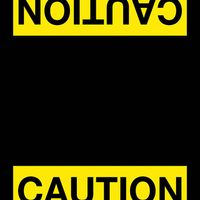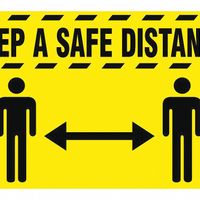Call +(254) 703 030 000 / 751 483 999 / 721 704 777
- Home
- Safety
- Floor Mats
- Entrance Mats
- Printed Message Entrance Mats
.....Read More
Frequently Asked Questions
What are the benefits of using printed message entrance mats?
Printed message entrance mats offer several benefits:
1. **Branding and Marketing**: These mats can be customized with logos, slogans, or messages, enhancing brand visibility and reinforcing brand identity as soon as customers enter a space.
2. **First Impressions**: A well-designed entrance mat creates a positive first impression, setting the tone for the visitor's experience and conveying professionalism and attention to detail.
3. **Safety and Cleanliness**: Entrance mats help reduce the risk of slips and falls by absorbing moisture and trapping dirt, keeping floors cleaner and safer.
4. **Cost-Effective Advertising**: Compared to other forms of advertising, printed mats are a cost-effective way to communicate messages or promotions directly to foot traffic.
5. **Durability and Longevity**: High-quality mats are designed to withstand heavy foot traffic, ensuring that the printed message remains visible and effective over time.
6. **Customization**: Businesses can tailor mats to specific needs, whether for seasonal promotions, directional guidance, or welcoming messages, providing flexibility in communication.
7. **Enhanced Aesthetics**: Mats can complement interior design, adding to the overall aesthetic appeal of the entrance area.
8. **Customer Engagement**: Engaging messages or designs can capture attention and encourage interaction, potentially increasing customer engagement and retention.
9. **Versatility**: Suitable for various environments, from retail stores to corporate offices, these mats can be used in multiple settings to convey different messages.
10. **Environmental Benefits**: Many mats are made from recycled materials, contributing to sustainability efforts and appealing to environmentally conscious consumers.
Overall, printed message entrance mats are a multifunctional tool that combines practicality with marketing, enhancing both the safety and aesthetic appeal of an entrance while promoting brand messages.
How do entrance mats help in maintaining cleanliness?
Entrance mats help maintain cleanliness by trapping dirt, moisture, and debris at the entry points of buildings, preventing them from being tracked inside. They act as the first line of defense against external contaminants, capturing particles from shoes and reducing the amount of dirt that enters the premises. This minimizes the need for frequent cleaning and maintenance inside the building.
Entrance mats are typically made from materials like rubber, nylon, or polypropylene, which are effective at scraping off dirt and absorbing moisture. By reducing the amount of water and mud brought indoors, they help prevent slip hazards and maintain a safer environment. This is particularly important in wet or snowy conditions, where moisture can lead to slippery floors.
Moreover, entrance mats contribute to the longevity of interior flooring by reducing wear and tear. Hard particles like sand and grit can scratch and damage floor surfaces, leading to costly repairs or replacements. By capturing these particles at the entrance, mats help preserve the quality and appearance of the flooring.
Entrance mats also play a role in improving indoor air quality. By trapping dust and allergens at the door, they prevent these particles from circulating within the building, which can be beneficial for individuals with allergies or respiratory issues.
In commercial settings, entrance mats can enhance the aesthetic appeal of a building's entrance, creating a welcoming and professional appearance. They can be customized with logos or designs, serving both functional and branding purposes.
Overall, entrance mats are a cost-effective solution for maintaining cleanliness, safety, and aesthetics in both residential and commercial environments.
What types of messages can be printed on entrance mats?
Welcome messages, branding or logos, safety instructions, seasonal greetings, motivational quotes, directional signs, personalized names or monograms, promotional offers, and hygiene reminders.
How do safety message mats enhance workplace safety?
Safety message mats enhance workplace safety by serving as visual reminders and physical barriers that promote awareness and prevent accidents. These mats are strategically placed in high-traffic areas, entryways, and near hazardous zones to communicate critical safety information, such as warnings, instructions, or reminders about personal protective equipment (PPE). By displaying clear and concise messages, they help reinforce safety protocols and encourage compliance among employees and visitors.
The mats are often designed with bright colors and bold text to capture attention quickly, ensuring that the safety messages are easily noticed and understood. This visual communication helps reduce the risk of accidents by reminding individuals to stay alert and follow safety procedures.
Additionally, safety message mats contribute to workplace safety by providing anti-slip surfaces that reduce the likelihood of slips, trips, and falls. Many mats are made from durable materials with textured surfaces that enhance traction, even in wet or oily conditions. This feature is particularly important in environments like kitchens, manufacturing floors, or laboratories, where spills are common.
Furthermore, these mats can be customized to address specific safety concerns relevant to the workplace, allowing for targeted messaging that addresses unique hazards. By integrating safety messages into the physical environment, they create a culture of safety and accountability, encouraging employees to take proactive measures to protect themselves and others.
Overall, safety message mats are an effective tool for enhancing workplace safety by combining visual communication with practical safety features, ultimately contributing to a safer and more aware work environment.
Can entrance mats be customized with specific messages?
Yes, entrance mats can be customized with specific messages. Customization options for entrance mats are widely available and can include a variety of features such as text, logos, colors, and designs. Businesses, organizations, and individuals often use customized mats to convey specific messages, enhance branding, or create a welcoming atmosphere.
The process typically involves selecting the type of mat material, such as coir, rubber, or carpet, and then choosing the size and shape that best fits the entrance area. Once the basic mat is selected, the customization process can begin. This can include adding a company logo, a welcome message, or any other specific text or design that the customer desires.
Advanced printing and manufacturing techniques, such as digital printing, inlaying, or embroidery, are used to ensure that the customized message is durable and visually appealing. These techniques allow for high-resolution images and precise color matching, ensuring that the final product meets the customer's specifications.
Customized entrance mats serve both functional and aesthetic purposes. They help in maintaining cleanliness by trapping dirt and moisture, while also serving as a marketing tool or a personal statement. They are commonly used in commercial settings like retail stores, hotels, and offices, as well as in residential spaces.
Overall, the ability to customize entrance mats with specific messages provides a versatile solution for those looking to enhance their entryways with personalized touches.
What materials are best for entrance mats to ensure durability?
The best materials for entrance mats to ensure durability include:
1. **Nylon**: Known for its resilience and ability to withstand heavy foot traffic, nylon is a popular choice for entrance mats. It is resistant to abrasion, retains its appearance over time, and dries quickly, making it ideal for areas exposed to moisture.
2. **Polypropylene**: This synthetic material is highly durable and resistant to stains, mildew, and fading. Polypropylene mats are suitable for both indoor and outdoor use, as they can handle various weather conditions and heavy use.
3. **Rubber**: Rubber mats are extremely durable and provide excellent traction, making them ideal for preventing slips and falls. They are resistant to water and can withstand harsh environmental conditions, making them suitable for outdoor entrances.
4. **Coir**: Made from coconut husk fibers, coir mats are robust and effective at scraping dirt and debris from shoes. They are biodegradable and eco-friendly, though they are best used in covered areas to prevent degradation from excessive moisture.
5. **Vinyl**: Vinyl mats are durable, water-resistant, and easy to clean. They are often used in commercial settings due to their ability to handle high traffic and their resistance to chemicals and oils.
6. **Microfiber**: While not as durable as some other materials, microfiber mats are excellent at absorbing moisture and trapping dirt. They are best used in conjunction with more durable materials for optimal performance.
7. **Aluminum**: For high-traffic commercial entrances, aluminum mats with carpet inserts offer durability and a sleek appearance. They are designed to withstand heavy use and can be customized with various inserts for added functionality.
Choosing the right material depends on the specific needs of the entrance, including foot traffic volume, exposure to the elements, and maintenance requirements.
How do social-distancing message mats contribute to public health?
Social-distancing message mats contribute to public health by serving as visual reminders that reinforce the importance of maintaining physical distance in public spaces. These mats are strategically placed at entrances, queues, and high-traffic areas to guide individuals on where to stand, thus reducing the risk of close contact and potential transmission of infectious diseases like COVID-19.
Firstly, they provide clear, consistent messaging that is easily understood by people of all ages and backgrounds, promoting compliance with public health guidelines. The visual cues help individuals maintain the recommended distance without the need for constant verbal reminders, reducing the burden on staff and allowing for smoother operations in businesses and public facilities.
Secondly, these mats can help alleviate anxiety and uncertainty in public spaces by providing a structured environment. When people see others adhering to the guidelines, it fosters a sense of community responsibility and collective effort in combating the spread of disease.
Additionally, social-distancing mats can be customized with branding or specific health messages, enhancing public awareness and education about the importance of social distancing. This can lead to increased public engagement and adherence to health protocols, ultimately contributing to the reduction of transmission rates.
In summary, social-distancing message mats are a practical, cost-effective tool that supports public health by promoting safe physical distancing, reducing transmission risks, and fostering a culture of health-conscious behavior in public spaces.

